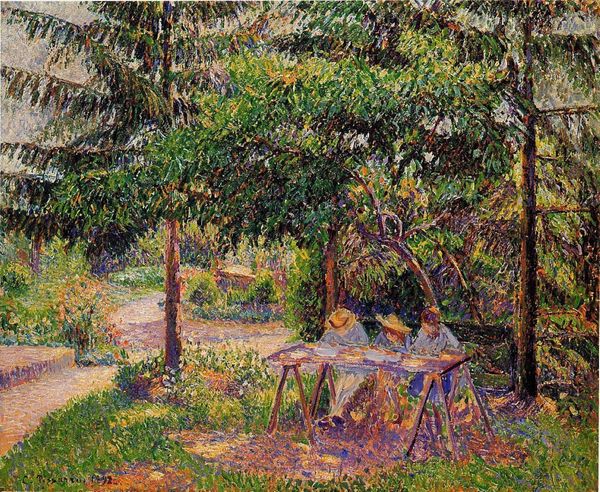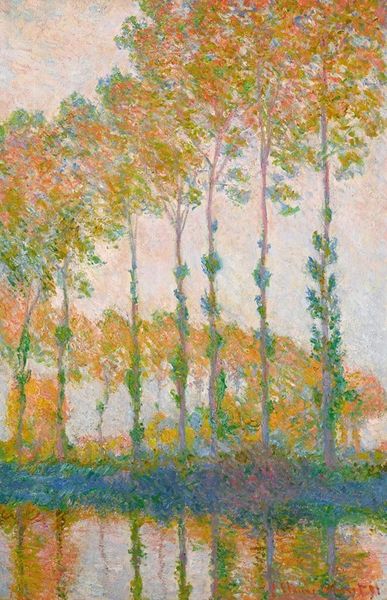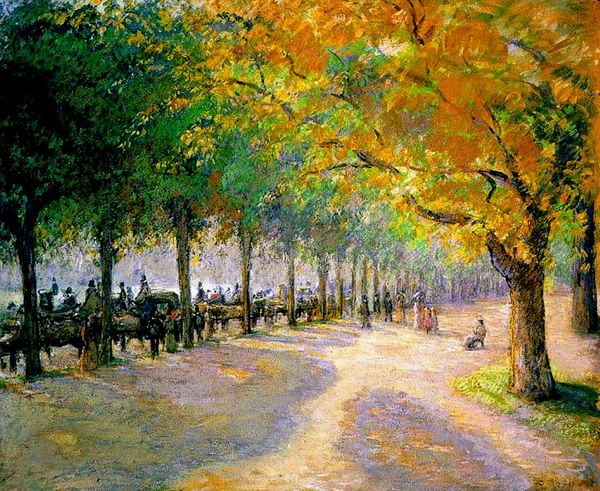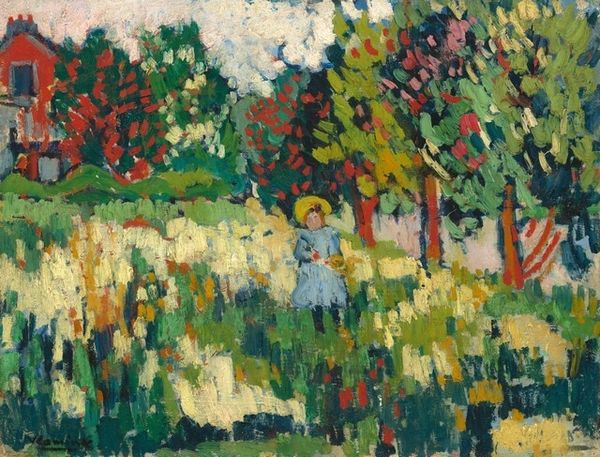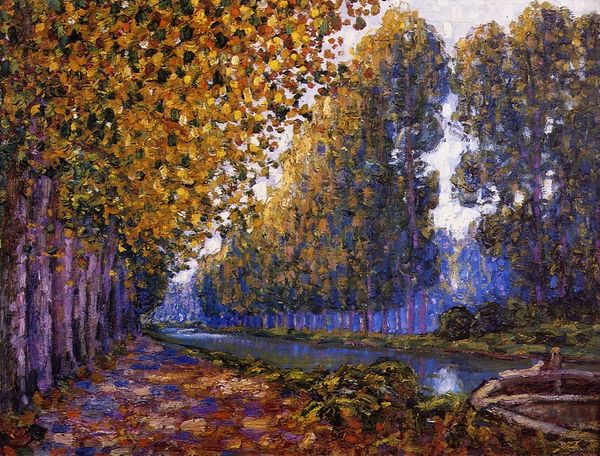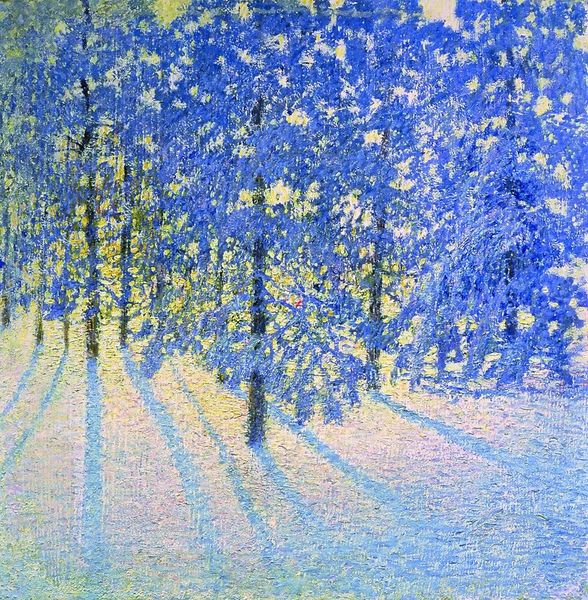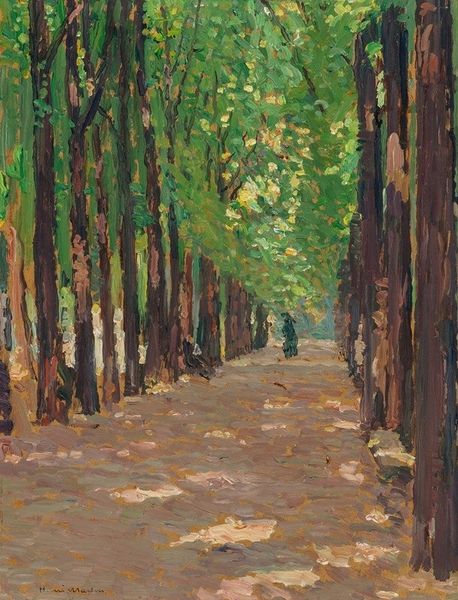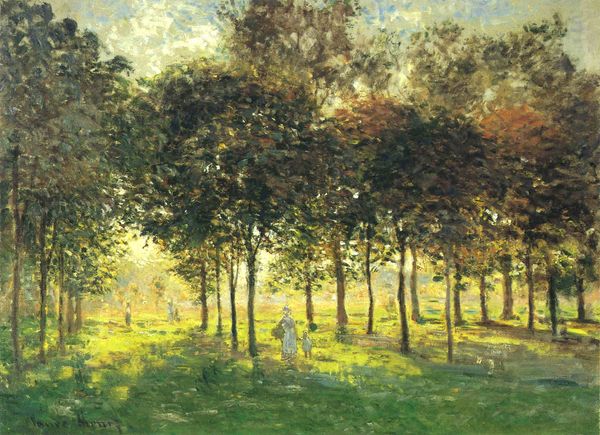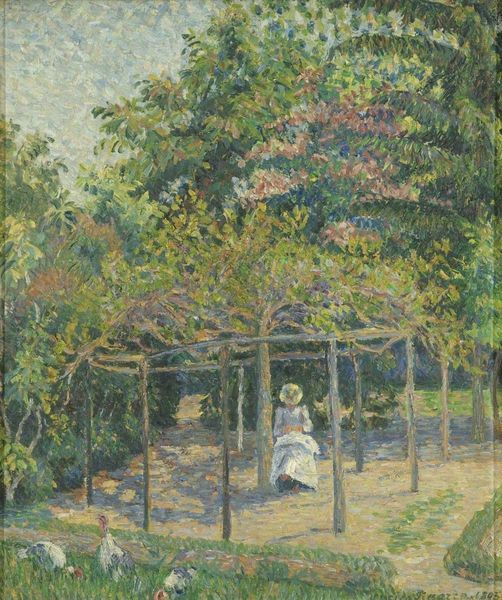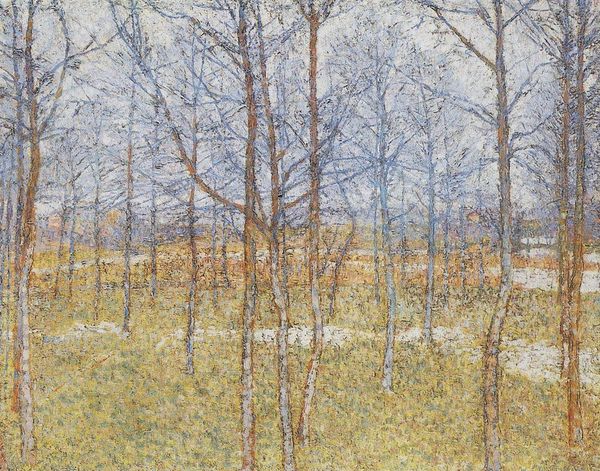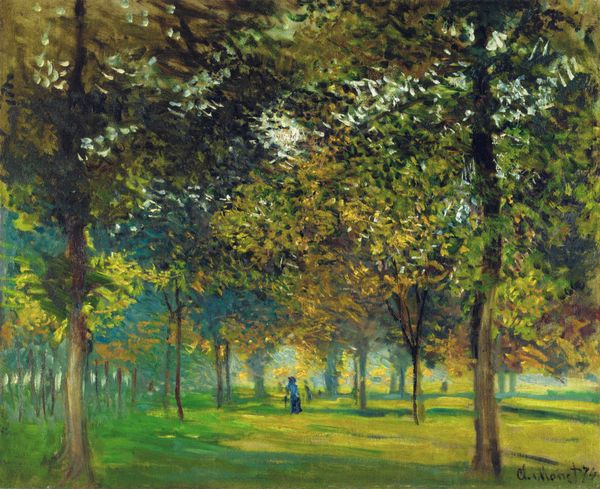
Copyright: Public domain US
Editor: Here we have Auguste Herbin's "Park in Paris" from 1904. It’s an oil painting, a scene of leisure; a couple sits on a bench in a park. What really strikes me is the almost mosaic-like quality of the brushstrokes, the ground looks like a patterned carpet. What do you make of this painting? Curator: I see a celebration of labor, strangely enough. Consider the repetitive, almost meditative act of applying each individual brushstroke. This process transforms industrial oil paint, a mass-produced material, into something unique. Look at the way the ground plane is built up - the materiality emphasizes the artist’s physical interaction with the canvas. Do you see any indication about the economic class of people or materials presented? Editor: The people do look to be middle class based on dress. I imagine good-quality oil paints like this were available to more people during this period because of industrial production. The visible brushstrokes highlight that labor you mention. Curator: Exactly! This work blurs the line between high art and craft by showcasing the repetitive handwork involved in its creation. Even the subject matter is significant, don’t you think? It is a park - a designed space, enjoyed by all classes, funded through the civic taxation. The painting documents, then celebrates, public expenditure of wealth and labor for community good! Editor: It’s not just an impressionistic scene of Parisian life then, it's almost an analysis of the art production in dialogue with the society’s conditions. That's a fresh perspective, thank you. Curator: And you highlighted how industrialization has affected accessibility to tools, means, and venues for the common good!
Comments
No comments
Be the first to comment and join the conversation on the ultimate creative platform.
